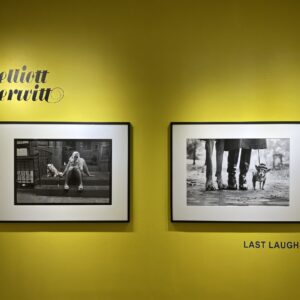JTF (just the facts): Published in 2022 by Raya Editorial (here). Hardcover (12.5 cm x 20.5 cm), 56 pages, with 70 color illustrations. Includes drawings and texts by the artist (in Spanish). Design by Santiago Escobar-Jaramillo. In an edition of 300 copies. (Cover and spread shots below.)
Comments/Context: La gente deprimida tiene sexo sucio y ganas de morir is the first photobook by Gabriella N. Baez, a documentary photographer based in San Juan, Puerto Rico, and its title translates from Spanish into English as “Depressed People Have Dirty Sex and Want to Die.” Her work is personal and raw, and often looks at her own life and community; Baez is interested in documenting familial relations in the queer community, bringing attention to the underrepresented and discussing issues such as depression and trauma. In her practice, she aims to create a more nuanced representation of Puerto Rico, and in particular, she has covered subjects related to the effects of Hurricane Maria on mental health; the deadly storm was followed by many miserable months that Puerto Ricans endured during the aftermath. This subject is particularly close to Baez, as her father committed suicide in the time after the hurricane.
The photobook documents two years Baez spent taking antidepressants, to deal with the consequences of hurricane Maria, years that were marked by both deep pain and moments of pleasure. During that time, she kept a diary and took photographs, and the making of the book was a way to bring those elements together and share her story. The photographs from this project will also be included in a group exhibition coinciding with the fifth anniversary of Hurricane Maria (here), opening later this year at the Whitney Museum of American Art in New York.
La gente deprimida, published by the independent Colombian publisher Raya Editorial, is constructed as a leporello and hosted inside hardcovers. This experimental design helps to transform Baez’s diary into a more creative and expressive format, bringing together a number of elements, including photography, drawings, and writings. The title of the book appears in pink hand-written letters on the cover against a dark background fading into a page from a diary, right away signaling a diaristic narrative; open the book, and the cover repeats, but this time the text is more legible, and it also reveals a photo of a couple taking a nude selfie in a bathroom while gently embracing. Inside, all of the elements are mixed together and printed in the continuous visual flow of the leporello format, placed on both sides and also on the inside area of the foldout.
Baez’s visual narrative is intense, chaotic, raw, and a bit elusive. The book doesn’t have a linear storyline, rather fragments of life are brought together in a continuous stream of experience, reflecting the non-linear nature of emotions that simultaneously process grief and pleasure. Photographs, polaroids, doctor’s notes, drawings, pages from the artist’s diary handwritten in Spanish, and other imagery all come together to tell her story.
The visual narrative starts with a black and white portrait of the artist, with her eyes closed and what looks like blood dripping off her face, yet her facial expression indicates calmness rather than pain. To its left, a vertical strip shows a blurry shot of white pills shot against a dark background; these are Zoloft, prescription medications used to treat depression, panic attacks, and other issues. As the page turns, the next image is a photo of a diary page with the same line numbered and repeated again and again; it reads “53 no lo volveré a hacer” (meaning “I will not do”), with a photo of a medicine vial placed in the center.
The images on the other side of the fold out get more intense and provocatively raw. There are shots of erect penises, a knife, a cemetery, blood stains, crumpled bed sheets, and nude portraits, all sequenced together. The pictures vary in their sizes and in their placement on the pages, and are often superimposed with additional doodles or texts, reflecting Baez’s disorienting and chaotic period in life. Baez also incorporates sewing over some of images, which seems to reflect both destructive elements and an attempt to stitch fragments together. One segment of the book mixes a row of small polaroids featuring portraits of lovers at the top of the page, while an excerpt from the diary appears at the below with simple yet intense drawings of figures having sex. Overall, as one moves through the flow there is a sense of fierce damage mixed with efforts to put order into the chaos.
The book documents a complicated and interwoven relationship between sex, identity, depression, and desire, and some of Baez’s shots and casual flashlit aesthetics echo the immediacy of images by Nan Goldin, Wolfgang Tillmans, and early Ryan McGinley. Seen as one integrated expression, Baez’s excessive creative energy and personal intensity are clearly visible throughout this project, and as an object, the photobook feels intimately cathartic. Making such a personal book requires risk taking, and Baez also hopes that her book will help to encourage other artists in Puerto Rico to tell their own stories.
Collector’s POV: Gabriella N. Baez does not appear to have consistent gallery representation at this time. As a result collectors interested in following up should likely connect directly with the artist via her website (linked in the sidebar).














